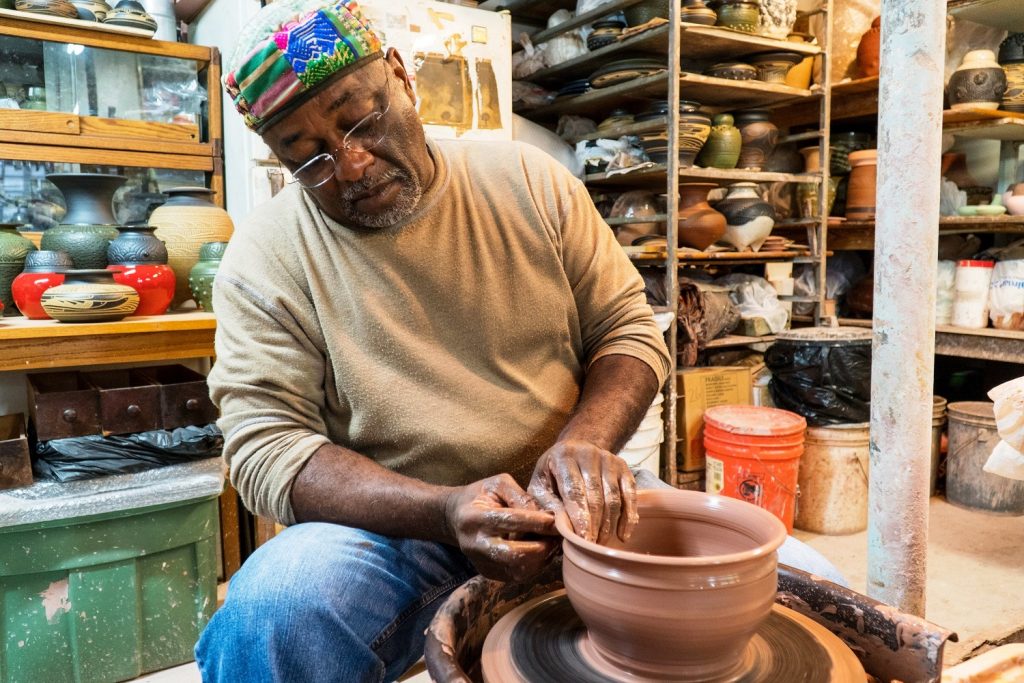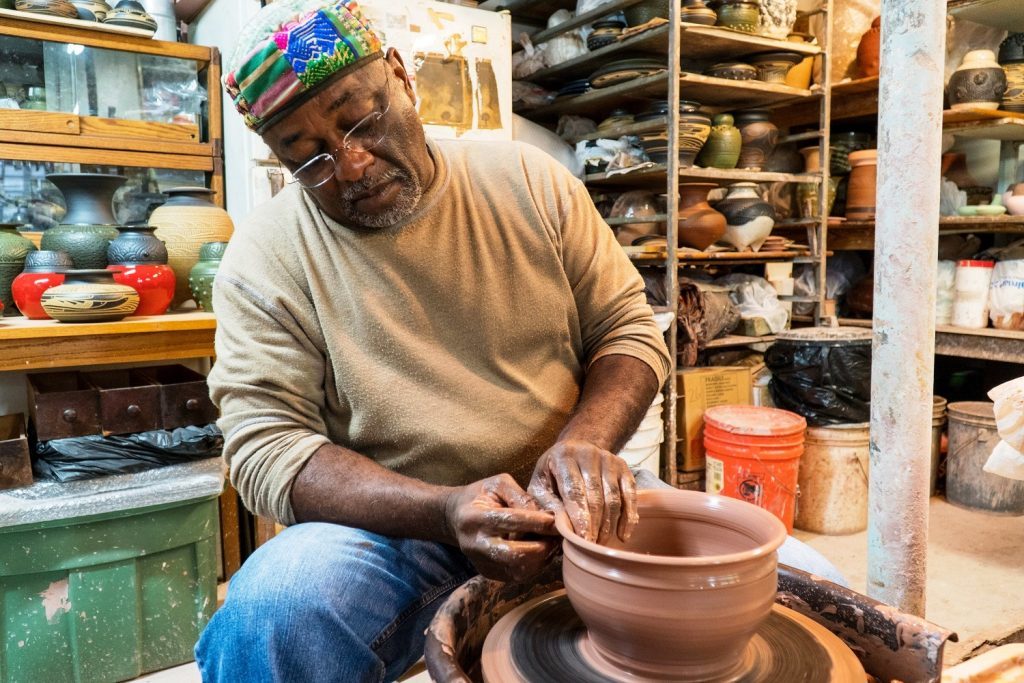
By Tommy Black
Alabama News Center

When Charles Smith came home after serving in Vietnam, he planned on teaching kids – and ended up throwing pots.
“In 1971, I went to Jackson State University in Jackson, Mississippi, to major in arts education,” the Mobile native says. “But I was so mad about the war, I couldn’t relate to other students. You didn’t hear much about PTSD (post-traumatic stress disorder) back then – but that’s what I had.”
At Jackson State, Smith earned a Bachelor of Science degree in art education and studied ceramics with famed potter Marcus Douyon. “I became his teaching assistant,” Smith remembers. “He would give me the keys to the studio, and all I had to do was lock the door when I left. I was in there until 2 or 3 a.m., seven days a week. It really gave me a chance to work out my issues and learn my craft.”
When Smith entered the graduate program in art education, his professor offered him the chance to teach the class. “I was honored, but I just didn’t like teaching, so I packed up and headed to Mobile,” he says.
Back home, Smith worked in a shipyard during the day and “broke a lot of pots” perfecting his skills in his parents’ garage at night. “My friends would be at the clubs on Saturday, and I’d be at home, throwing pots in the studio. They thought I was crazy.”
That hard work and artistic dedication started paying off as people around the Gulf Coast discovered, and then collected, Smith’s pots, vases and other ceramic works. “The Mobile Museum of Art had exhibited one of my pieces while I was still in school, and people started asking about it,” he says. “Then, in 1977, the city hired me as a resident artist.”
Now the once-angry Vietnam veteran has gained a reputation as one of the South’s most accomplished potters. His works have been exhibited in the Smithsonian Institution’s National Museum of American Art in Washington, D.C., and the American Craft Museum in New York. His traveling exhibit, “Uncommon Beauty in Common Objects: The Legacy of African American Craft Art,” has been shown in museums around the country. In addition to the museum collections, Smith’s privately commissioned works adorn gardens and homes throughout the South.
Using fired clays and brightly colored glazes, Smith decorates his pieces using the carved-and-sgraffito technique. In Italian, “sgraffito” means “to scratch,” with the designs produced by applying layers of color and then scratching off parts of some layers to create contrasting images, patterns and textures. The results are fire-engine-red and midnight-blue pots, often adorned with human faces or fish, leaves and other images from nature.
Even with his fame, Smith still spends hours in his home studio, drawing plans and throwing pots. “At first my inspiration was making enough money to eat and pay the bills,” he says with a laugh. “My style has definitely changed through the years, because there’s always a higher level you want to reach – so you have to keep working.
“I’ve been doing this for about 40 years, and now my goal is to have a certain style, so people can just look at the pot and know I made it — they don’t have to turn it over and look on the bottom for the artist’s name.”




